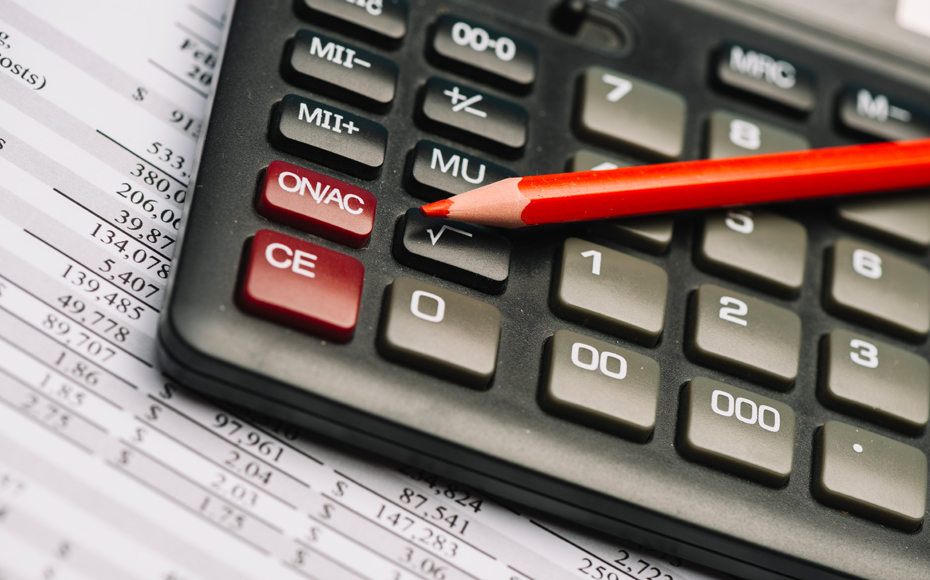

August 05, 2019

The Goods and Service Tax (GST) is an indirect/consumption tax levied on the supply of goods. Currently, GST is divided into 5 tax slabs for collection of tax- 0%, 5%, 12%, 18% and 28%.The Goods & Service Tax came into effect on July 1, 2017 as per the 101st Amendment of the Constitution of India by the Indian Government.
The GST India council that comprises of 33 members and headed by the Union Finance Minister is responsible for any revision or enactment of rule or any rate changes of goods and services in India. The Goods & Services Tax Network (GSTN) is a non-profit organization for creating a refined network to access information by stakeholders, government and tax payers. The GSTN software is developed by Infosys Limited and is maintained by National Informatics Centre (NIC).
If you ask ‘What is GST?’ you probably need to know Indian tax structure and in that, GST India! In India, the introduction of tax dates back to 1860. Tax is mandatory for all the citizens of India. Taxes are basically of two types-Direct Tax and Indirect Tax. Direct Tax is the tax paid by the taxpayer to the government and cannot be passed to someone else. Example: Income tax, Estate tax, Wealth Tax. On the other hand, Indirect Tax is the tax imposed on goods and services and it can be passed on to one tax payer to another. Example: Customs Duty, Central Excise Duty, Service Tax, Sales Tax, Value Added Tax (VAT).
Tax is a mandatory fee imposed upon individuals or corporations by the Central and the State Government to help build the economy of a country by meeting various public expenses. Here is where the question of ‘What is GST and what does it imply?’ matters! GST India has contributed much to the nation’s economy by dodging the cascade effect that other tax structures had. Discussing about GST is very vast topic that requires various sessions to understand. Nevertheless, this journal about GST will familiarize you with the important aspects of GST India and other relevant sections that encompasses all about GST.
GST Explained Over the Years
|
Year |
Status |
|
2000 |
The then Prime Minister of India, Atal Bihari Vajpayee, introduced the concept of GST and steered a committee to design, plan and set the GST model |
|
2006 |
P. Chidambaram, the then Union Finance Minister announced that GST will be active from April 1, 2010 |
|
2009 |
Empowered Committee released the First Discussion Paper |
| 2011 | 115th Constitutional Amendment Bill was introduced and subsequently lapsed because of the failure to make agreement between the Central and the State Governments |
| 2014 | The Constitution(122nd Amendment) Bill revising to introduce the GST was introduced in the Lok Sabha |
|
August 2016 |
The Constitution (101st Amendment) Act was enacted. |
|
September 2016 |
First GST council meeting was conducted |
|
March 2017 |
The GST council recommends CGST (Central Goods & Service Tax), SGST (State Goods & Service Tax), IGST (Integrated Goods & Service Tax), UTGST (Union Territory Goods & Service Tax) and Compensation Cess Act |
|
April 2017 |
CGST, IGST, UTGST and Compensation Cess Acts were passed |
|
May 2017 |
GST council accepts and recommends all the rules illustrated under CGST, SGST, IGST, UTGST and Compensation Cess Act |
|
June 30, 2017 |
All states except Jammu & Kashmir passed their respective states’ SGST Act |
|
July 1, 2017 |
GST was launched |
|
July 8, 2017 |
Jammu & Kashmir passed SGST Act. CGST and IGST ordinances promulgated to extend GST to Jammu & Kashmir |
|
February 1, 2019 |
Amendments to CGST, IGST, UTGST AND Compensation to State Acts enacted |
|
July 1, 2019 |
35th GST council meeting was held and decided to replace the existing GST forms with revised GST forms as briefed below:
|
|
August 2019 |
Kerala Flood Cess (KFC) will be implemented |
|
October 1, 2019 |
New GST ANX 1, GST ANX 2 will be implemented. Also, old GSTR 1 and GSTR 2A forms will phased out |
|
January 1, 2020 |
GST RET will be implemented. Furthermore, GSTR 3B form will be phased out |
GST has unified the different central and state levied taxes and has succeeded in creating a single tax structure thereby reducing the cascading effect of taxes in India. States collected Value Added Tax (VAT), with each state having their own set of rules and regulations.
Central government imposed Central State Tax (CST) on inter-state sales of goods. State and centre used to levy indirect taxes like octroi, local tax, entertainment tax etc. that led to confusions pertaining to the intersecting of taxes levied by centre and state.
On manufacturing and selling goods, centre used to levy excise duty and state used to levy VAT. These taxes levied by state and centre led to ‘tax on tax’ effect, which is otherwise known as ‘cascading effect of the tax’.
Which are the different types of direct and indirect taxes in India?
Direct Taxes: Income Tax, Estate Tax, Wealth Tax
Indirect Taxes: Customs Duty, Central Excise Duty, Service Tax, Sales Tax, VAT
Before GST regime, taxes like Central Excise Duty, Duties of Excise, Additional duties of Excise and Customs, Special Additional Duty of Customs, Cess, State VAT, Central Sales Tax, Purchase Tax, Luxury Tax, Entertainment Tax, Entry Tax, Taxes on advertisements, Taxes on lotteries, betting and gambling existed.
All the taxes above have been replaced by CGST, SGST and IGST. But GST taxes levied on inter-state purchase at 2% reduction rate validated through Form C are still prevailing. It involves non-GST goods such as petroleum crude, high speed diesel, petrol, natural gas, aviation turbine fuel and alcoholic drinks. Only the following transactions applies to these goods: resale, manufacturing or processing usage, sectors like telecommunication network, mining, generation or distribution of electricity or other power sector.
GST in India is comprised of three components:
|
GST Rate Slab |
|
Items Coming under the slab |
|
No Tax |
7% |
Fresh fruits, vegetables, milk, butter milk, curd, natural honey, flour, besan, bread, all kinds of salt, jaggery, hulled cereal grains, fresh meat, fish, chicken, eggs, bindi, sindoor, kajal, bangles, drawing and colouring books, stamps, judicial papers, printed books, newspapers, jute and handloom, hotels and lodges with tariff below Rs.1000 |
|
5% |
14% |
Apparel below INR 1000, footwear below INR 500, packaged food items, cream, skimmed milk powder, branded paneer, frozen vegetables, coffee, tea, spices, pizza bread, rusk, sabudana, cashew nut, cashew nut in shell, raisin, ice, fish fillet, kerosene, coal, medicine, incense sticks, postage or revenue stamps, fertilizers, rail and economy class air tickets, small restaurants etc. |
|
12% |
17% |
Frozen meat products, butter, cheese, ghee, dry fruits in packaged form, animal fat, sausages, fruit juices, ketchup & sauces, ayurvedic medicines, all diagnostic kits and reagents, cell phones, spoons, forks, tooth powder, umbrella, sewing machine, spectacles, indoor games like playing cards, chess board, carom board, ludo, apparels more than Rs.1000, non-AC restaurants, business class air ticket, state-run lottery, work contracts |
|
18% |
43% |
Pasta, biscuits, cornflakes, pastries and cakes, preserved vegetables, jams, soups, ice cream, mayonnaise, mixed condiments and seasonings, mineral water, footwear costing more than Rs.500, camera, speakers, monitors, printers, electrical transformer, optical fibre, tissues, sanitary napkins, notebooks, steel products, headgear and its parts, aluminium foil, bamboo furniture, AC restaurants that serve liquor, restaurants in five-star and luxury hotels, telecom services, IT services, branded garments and financial services |
|
28% |
19% |
Chewing gum, bidi, molasses, chocolate not containing cocoa, waffles and wafers coated with chocolate, pan masala, aerated water, personal care items like deodorants, shaving creams, after shave, hair shampoo, dye, sunscreen, paint, water heater, dishwasher, weighing machine, washing machine, vacuum cleaner, automobiles, motorcycles, 5-star hotel stays, race club betting, private lottery and movie tickets more than Rs.100 etc. |
With the implementation of GST India, our nation could observe sundry benefits to the economy and the society. GST is one indirect tax that could supersede more than a dozen other taxes. GST is one such tax that could espouse the slogan “One Nation, One Tax, One Market” in the perfect way!
GST in India is channelled to dodge the public’s struggles that arouse from ‘cascading effect of tax’ or the ‘tax on tax’ system. With ‘tax on tax’ condition, the end customers were supposed to pay tax on the previously calculated tax which will result in an inflated price of the product/service purchased. GST regime is so far the best contributing factor in waiving off this ‘tax on tax’ burden on the customers.
GST in India is undoubtedly one of the most feasible decisions taken by the Government that could replace a number of other taxes collected by the State and the Central governments as briefed below:
|
Central Taxes |
State Taxes |
|
|
IT enabled Automated Procedures: GST procedures like registration, returns, refunds, tax payments etc. are all automated through IT incorporation. GSTN portal is the common portal through which taxpayers interact with tax administration.
Reduced Compliance costs: GST offers reduced compliance costs and there will be no need for multiple-record keeping of various taxes, thus reducing the effort, manpower and resources required for record maintenance. Uniformity in laws, tax rates across the country reduces the compliance cost.
Advantage for Trade & Industry
GST returns can be filed online and there are certain new compliances introduced under GST bills with a number of new systems included in it.
GST is the best solution for substituting the multiple tax rates of the Central and State governments. With the practice of GST, it is expected that Indian Economy will soar to greater heights and attract more foreign investments resulting in higher GDP and raise in socio-economic standards.


